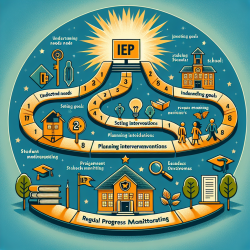Understanding the Psychological Impact of Waiting
The COVID-19 pandemic has significantly impacted healthcare systems worldwide, leading to delays in medical procedures and increased waiting times. This delay has not only affected physical health outcomes but has also imposed a psychological burden on patients and caregivers. According to a scoping review by Gagliardi et al. (2021), the mental health impact of waiting for medical procedures is profound, with many patients and caregivers experiencing anxiety, depression, and a decreased quality of life.
Key Findings from the Research
The review synthesized data from 51 studies, focusing primarily on organ transplants, surgeries, and cancer management. The findings revealed that prolonged waiting times exacerbated mental health issues, particularly among women, new immigrants, younger individuals, and those with lower socio-economic status or poor coping abilities. These groups reported higher levels of anxiety and depression, which worsened as waiting times increased.
Patient-Centered Strategies for Mitigation
To address these challenges, the research highlighted several patient-centered strategies that could mitigate the psychological burden of waiting:
- Educational Interventions: Six studies evaluated educational strategies aimed at developing coping skills. While two studies reported a reduction in depression and one in anxiety, results were mixed, indicating the need for further refinement and targeted approaches.
- Acknowledgement and Communication: Patients expressed a strong desire for healthcare providers to acknowledge their concerns and maintain open lines of communication. Regular updates about wait-list positions, prioritization criteria, and anticipated procedure dates were particularly valued.
- Peer Support: The inclusion of peer support mechanisms, where patients can connect with others in similar situations, was identified as a beneficial strategy to alleviate feelings of isolation and anxiety.
Implementing These Strategies in Practice
For practitioners, implementing these patient-centered strategies can enhance the therapeutic experience and improve mental health outcomes for patients on waiting lists. Here are some practical steps to consider:
- Develop Tailored Educational Programs: Design educational interventions that are specific to the needs of different patient demographics. Consider incorporating digital platforms to deliver these programs, making them more accessible.
- Enhance Communication Protocols: Establish clear communication channels with patients. Regularly update them on their status and any changes to their expected procedure dates. This transparency can significantly reduce anxiety and build trust.
- Facilitate Peer Support Networks: Encourage the formation of support groups, either in-person or virtually, to allow patients to share experiences and coping strategies. This can be particularly effective in reducing feelings of isolation.
Encouraging Further Research
While the scoping review provides valuable insights, it also highlights the need for ongoing research to optimize these strategies for diverse patient populations, especially in the context of COVID-19. Practitioners are encouraged to contribute to this body of research by exploring innovative approaches and evaluating their effectiveness in real-world settings.
To read the original research paper, please follow this link: The psychological burden of waiting for procedures and patient-centred strategies that could support the mental health of wait-listed patients and caregivers during the COVID-19 pandemic: A scoping review.










